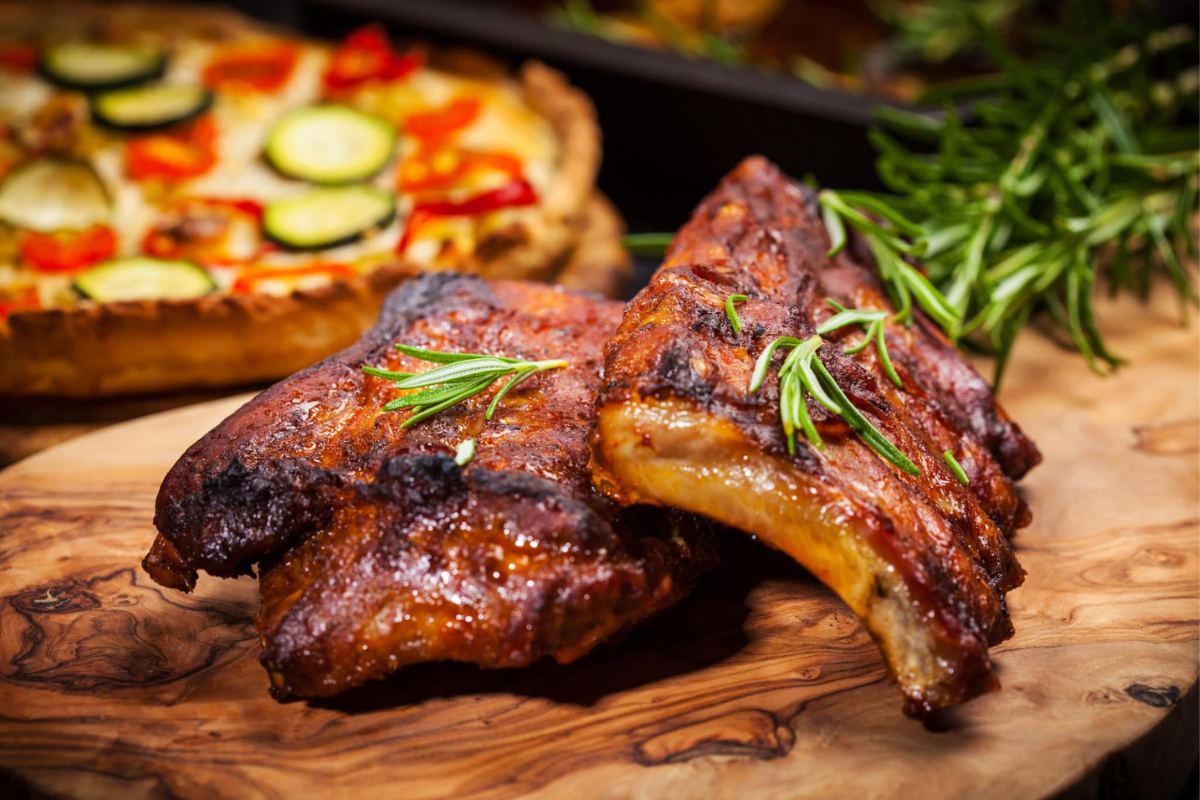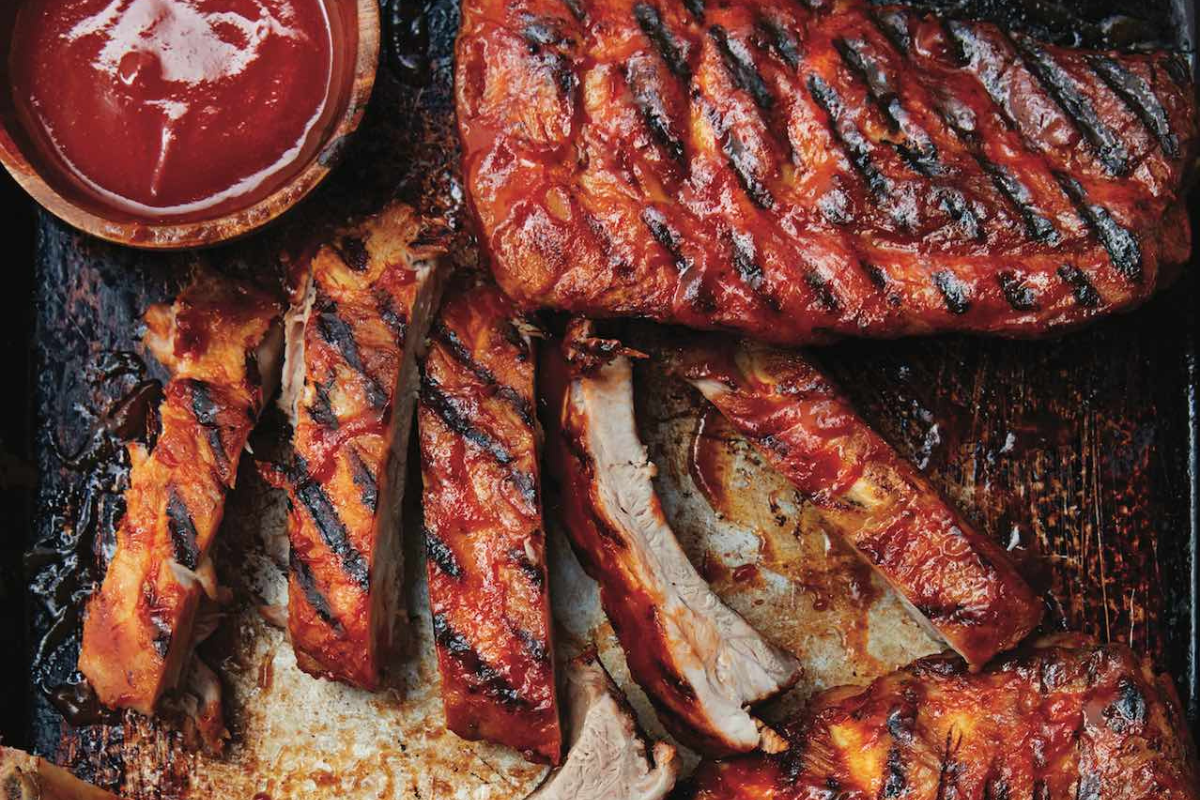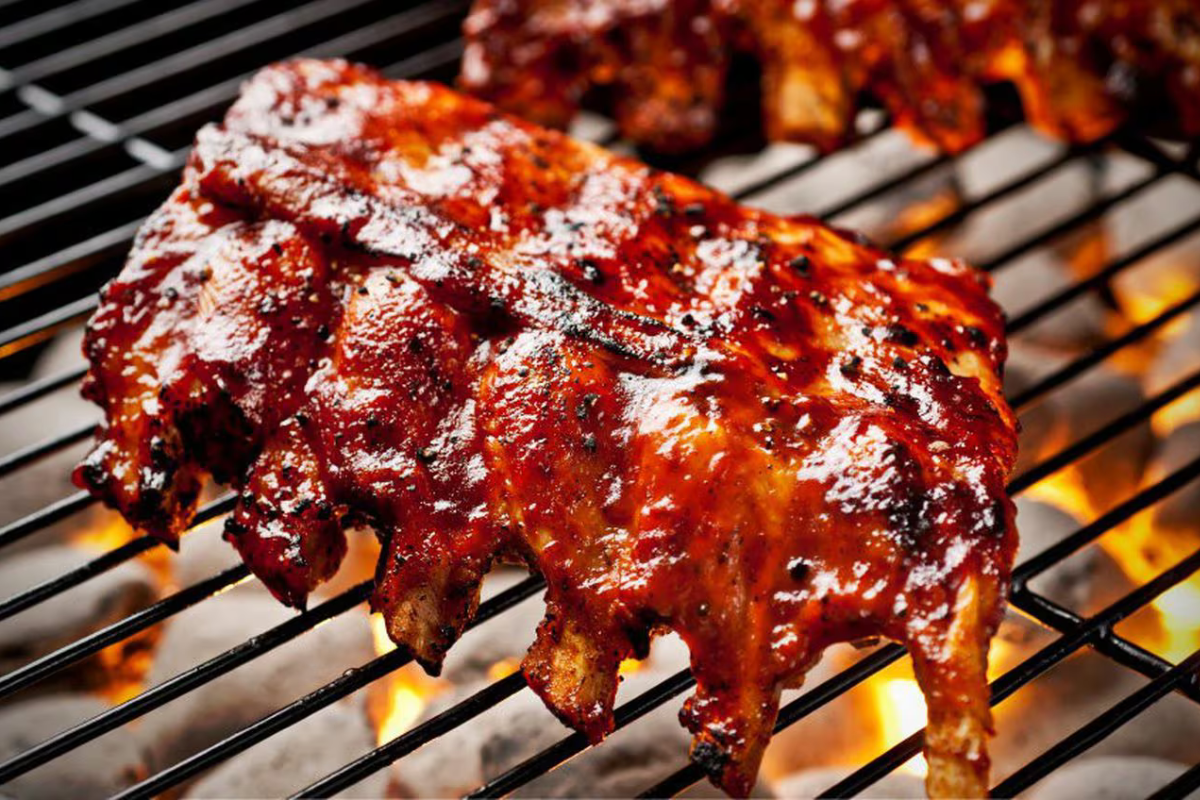For many Americans, BBQ ribs are more than just food. They are a culinary experience that evokes feelings of backyard gatherings, summer barbecues, and finger-lickin’s good flavor. This quintessential American dish boasts a rich history, regional variations, and techniques that have been perfected over generations. BBQ ribs have become synonymous with summer celebrations.

Photo: Tony’s Meats & Market
The roots of American BBQ ribs can be traced back to the Caribbean, where enslaved people brought their slow-cooking techniques and flavorful spices. Early American barbecue relied on readily available cuts of meat, like pork ribs, which were slow-cooked over pits filled with wood coals. These pits imparted a smoky flavor that became a defining characteristic of American BBQ.
When it comes to enjoying BBQ ribs, the experience is elevated when shared with friends and family.
As settlers moved westward across the country, regional variations emerged. In the South, where access to molasses was plentiful, sweeter, tomato-based barbecue sauces became a staple. Carolina-style BBQ is known for its tangy vinegar base, while Texas BBQ takes a more purist approach, focusing on the smoky flavor of the meat itself.
Delicious BBQ Ribs for Every Occasion
BBQ ribs can be served at various occasions, from casual get-togethers to festive summer holidays. The magic of BBQ ribs transcends the flavorful sauce. The true star of the show is the cooking method, a process that transforms tough cuts of meat into melt-in-your-mouth masterpieces. The love for BBQ ribs is universal, uniting people through the joy of good food.

Photo: Eat What We Eat
Smoking is the undisputed champion of BBQ methods. It utilizes indirect heat and fragrant wood smoke to slowly cook the ribs to tender perfection. This low and slow approach allows the smoke to gently penetrate the meat, infusing it with a deep, smoky flavor that’s impossible to replicate with other methods. Different woods like hickory, oak, and mesquite offer their own flavor profiles. For many, BBQ ribs symbolize the essence of summer cooking.
Hickory adds a sweet smokiness, while oak provides a more subtle, earthy character. Mesquite, known for its bold flavor, should be used sparingly to avoid overpowering the ribs. The key to successful smoking lies in patience and maintaining a consistent low temperature. This allows the connective tissues in the ribs to break down gradually, resulting in that coveted fall-off-the-bone tenderness.
For those seeking a quicker method, grilling offers a delicious alternative. This approach provides a nice char on the outside of the ribs while keeping the inside juicy and flavorful. Grilling typically involves searing the ribs over direct heat first to lock in the juices. Then, the ribs are moved to a cooler zone on the grill or wrapped in foil to finish cooking indirectly. Basting with sauce during grilling adds another layer of flavor and helps develop a beautiful caramelized crust. People often gather to share their favorite BBQ ribs recipes, creating lasting memories.
While grilling doesn’t achieve the same depth of smoke penetration as smoking, it allows for a smoky flavor nonetheless, especially if using wood chips or a smoker box on your gas grill. This method is perfect for those who want a delicious rack of ribs without the time commitment of smoking.

Photo: Eat Up! Kitchen
Braising is a low and slow method that involves simmering the ribs in a flavorful liquid until they are incredibly tender. This technique is often used in conjunction with other methods, such as smoking or grilling, to add an extra layer of rich depth of flavor. The braising liquid can be anything from water and aromatics to stock and beer and often includes vegetables for added flavor. The long cooking time allows the collagen in the ribs to break down, resulting in incredibly tender meat that practically falls off the bone. Braising is a great option for those who prefer a less smoky flavor profile and enjoy a more intensely flavored meat.
The process of cooking BBQ ribs can become a cherished tradition in many households.
Regional variations: A symphony of flavors
Venture down to the Carolinas and you’ll be greeted by the irresistible aroma of vinegar-based BBQ. Here, ribs are bathed in a tangy and tart sauce, often infused with a peppery kick. This style further divides into two distinct camps. North Carolina’s Lexington-style ribs are known for their vibrant red hue, achieved through the liberal use of red pepper flakes in the sauce. In contrast, South Carolina takes a more mustard-based approach, resulting in a yellow sauce that offers a unique tang and depth of flavor. Regardless of color, Carolina-style ribs are a testament to the power of vinegar in creating a refreshingly tart and flavorful barbecue experience. Enjoying BBQ ribs with loved ones enhances the overall experience.
Travel west to Memphis, Tennessee, and you’ll find a love affair with sweetness and smoke. Memphis-style ribs are all about achieving the perfect balance between these two elements. A molasses and brown sugar-based sauce coats the ribs, caramelizing on the outside and creating a beautiful sticky glaze. Meanwhile, the smoky kiss of hickory wood infuses the meat, adding a layer of complexity that complements the sweetness of the sauce. Memphis-style ribs are a true indulgence for those who crave a sweet and smoky barbecue experience.

Photo: Al
Head south to Texas, the land of barbecue purists, and you’ll encounter a more minimalist approach. Texas-style ribs rely on the inherent flavor of the meat, accentuated by a simple yet deeply flavorful dry rub. This rub typically features paprika, chili powder, and garlic, creating a robust and savory profile that allows the natural taste of the ribs to shine. The long cooking process with post- oak wood plays a crucial role in Texas-style barbecue. The low and slow approach imbues the ribs with a unique smoky character that perfectly complements the dry rub.
Texas-style ribs are a testament to the power of simplicity and the magic of smoke in creating a truly delicious barbecue experience. The satisfaction of biting into tender BBQ ribs is unparalleled.
Let’s detour to Missouri and explore the St. Louis-style rib. This variation is known for its distinctive cut. Spare ribs take center stage but with a twist: the sternum bone is removed, creating a flatter and more manageable rack that’s perfect for grilling. St. Louis-style ribs are typically slathered in a sweet and smoky sauce, similar to Memphis-style, but with a focus on a more balanced flavor profile. This allows the smoky and savory notes to complement the sweetness of the sauce, creating a truly delicious and well-rounded barbecue experience. With so many styles and flavors, BBQ ribs offer something for everyone to enjoy.

